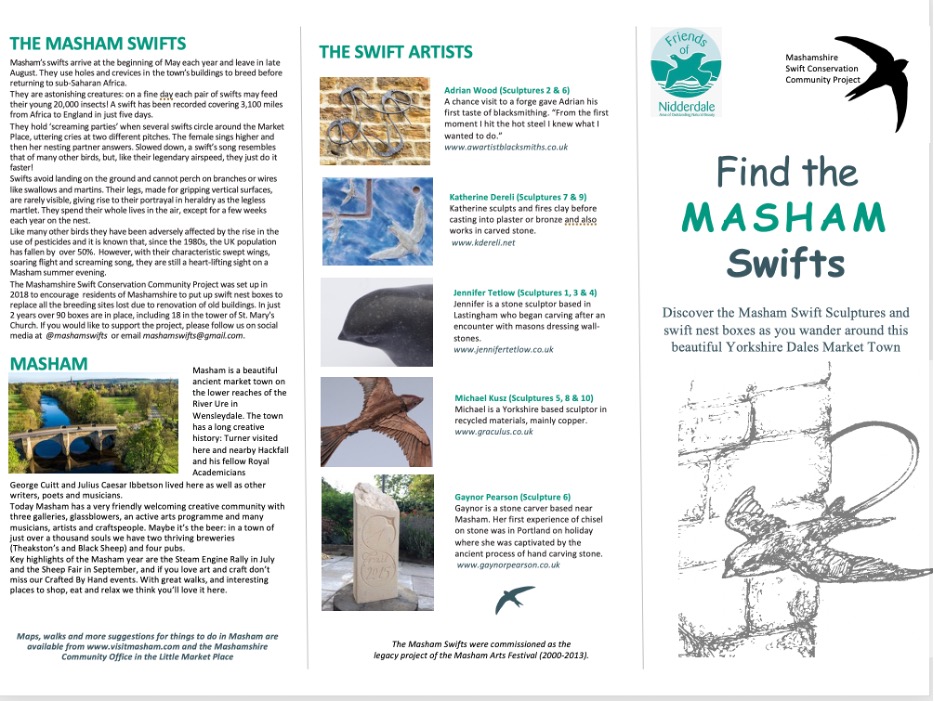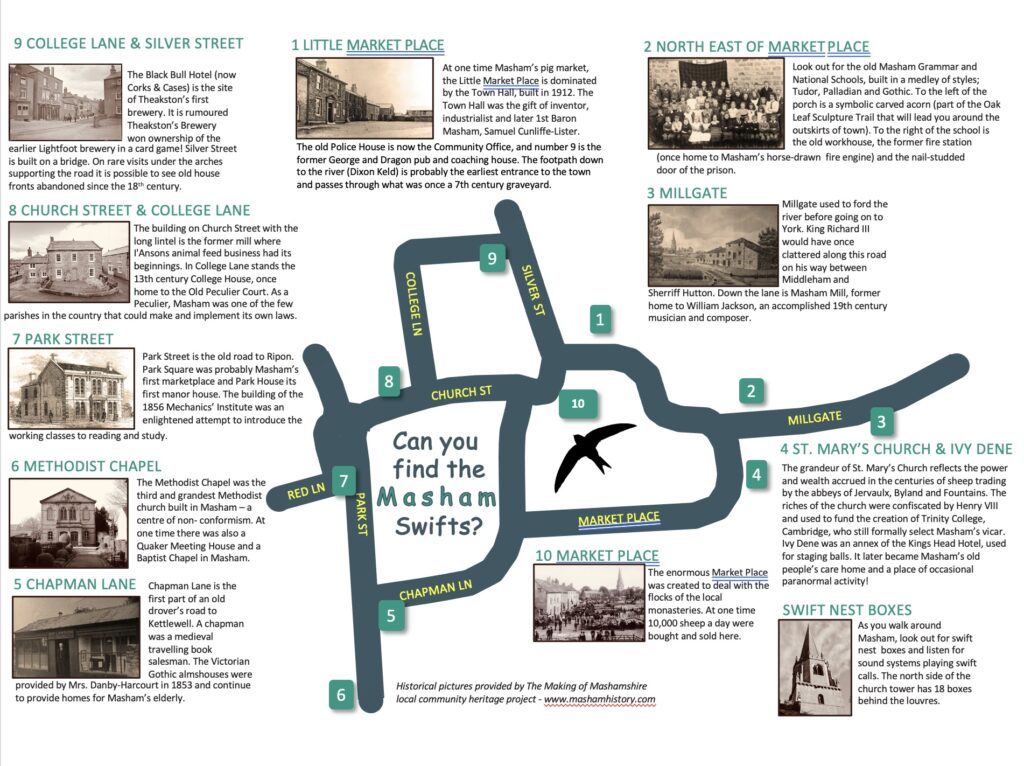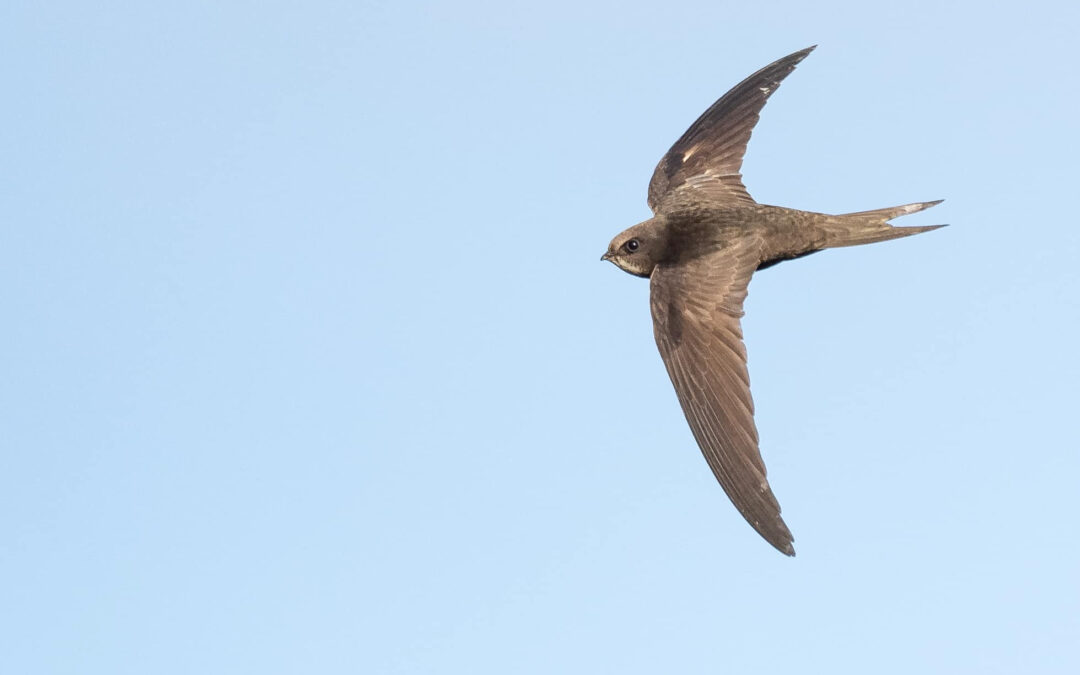Swifts are unique and amazing birds. Although similar in appearance to swallows and house martins, they are not related and evolved separately some 50 million years ago. Surprisingly perhaps, their closest bird relatives are hummingbirds! What makes swifts so unique is that they avoid landing on the ground and cannot perch on branches or wires like swallows and martins. Their short legs, made for gripping vertical surfaces, are rarely visible, giving rise to their portrayal in heraldry as the legless martlet. They spend their whole lives in the air, except for a few weeks each year on the nest. They feed, sleep and even mate on the wing. What’s more, they are the fastest flying birds in horizontal flight, recorded at almost 70 mph. They have truly evolved to become ‘fish of the air’.
Swifts are iconic to the small market town of Masham in lower Wensleydale, North Yorkshire, where their behaviour was first documented by Yorkshire ornithologist Ralph Chislett (1883 – 1964), who retired to Masham from Rotherham and wrote detailed accounts of the swifts nesting in the eaves of his home.
Masham’s swifts arrive at the beginning of May each year and leave in late August. They use holes and crevices in the town’s buildings to breed before returning to sub-Saharan Africa. They are astonishing creatures: on a fine day each pair of swifts may feed their young 20,000 insects. A swift has been recorded covering the 3,100 miles from Africa to England in just five days.
They form ‘screaming parties’ when several swifts circle around the Marketplace, uttering cries at two different pitches. The female sings higher and then her nesting partner answers. Slowed down, a swift’s song resembles that of many other birds, but, like their legendary airspeed, they just do it faster! With their characteristic swept wings, soaring flight and screaming song, they are a heart-lifting sight on a Masham summer’s evening.
Like many other birds they have been adversely affected by the rise in the use of pesticides and, since the 1980s, the UK population has fallen by over 50% to the point where they are now red listed. Their traditional nesting places, the cavities in the eaves of old buildings, are also being lost to refurbishment. This is now beginning to be addressed by provision of swift bricks in new build properties and fixing external swift boxes to the walls of older ones.
The Mashamshire Swift Conservation Community Project was set up in 2018 to encourage residents of Mashamshire to put up swift nest boxes to replace all the breeding sites lost due to renovation of old buildings. Now over 100 boxes are in place, including 18 in the tower of St. Mary’s Church, where 33 Masham-born swifts have been successfully reared over the last 4 summers.
If you would like to find out more about the project, call into the Mashamshire Community Office (the old police house on Little Marketplace) and pick up a copy of the Masham Swift Trail Leaflet, which gives a history of the town as well as where to find 10 swift-related artworks hidden away on some of its historic buildings. Also, you can check out the YouTube channel, @mashamswifts. Visit St. Mary’s Church between June and August and you can see a live stream of the young swifts and their parents in the tower on a monitor screen near the font.
Article contributed by John Darby – chairman of the Mashamshire Swift Conservation Community Project and Yorkshire Blue Badge Tourist Guide – https://yorkshiresbestguides.co.uk/project/john-darby/




